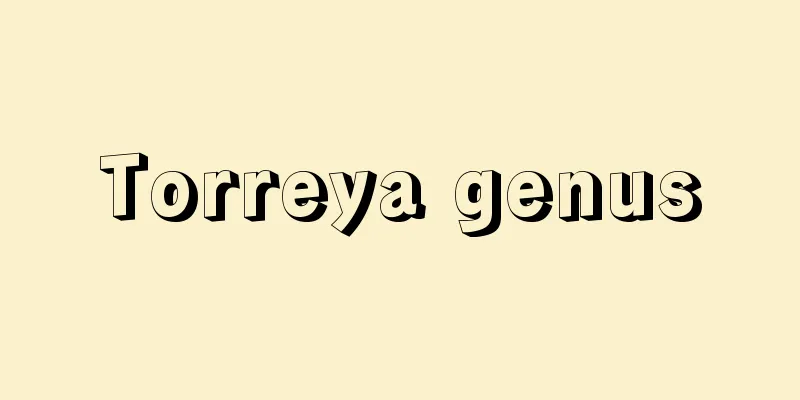Complex society - Fukugoshakai

|
This term has been used in three contexts. (1) Term by H. Spencer He compared human society to a biological organism, and saw society evolving from a primitive simple society to a society that is structurally and functionally differentiated, just as living organisms have evolved from simple, homogeneous organisms to organisms with increasingly complex and heterogeneous internal structures. In this process, he called a state in which multiple simple societies are combined and synthesized to have a certain level of political organization a compound society. He called a society at the stage where these societies are further resynthesized, with further differentiation of social functions and progress in political integration a double compound society, and a society at the more advanced civilized stage a triple compound society. Note that sometimes the term synthetic society is used instead of compound society. (2) Term by JS Furnivall He used this term when analyzing Indonesian society at the time when it was a Dutch colony. According to him, a plural society is one in which different religions, races, and social systems coexist side by side within the same political unit, without mixing or merging with each other. A typical example of such a society is one in which multiple ethnic groups not only have their own cultures, but also their own social organizations, and they live together under a single political authority, forming mutually segmented living spheres with specific economic functions. (3) A. R. Radcliffe-Brown's terminology After Western nations established colonies in various parts of Africa and elsewhere, a two-tiered society was formed there, with a political economy dominated by Europeans and a traditional culture carried on by the local people. He called this kind of society a composite society. In this society, the former, who hold the political and economic power, and the latter, who are indigenous people, are not only separated from each other by their different languages, customs, and values, but also form a hierarchical relationship of dominance and subordination. In any case, the concept of a complex society was put forward to explain the social structure that is formed when homogeneous small societies that existed in a segmented way are subsumed under a larger political unit. This concept is hardly used in today's sociology when analyzing developed societies, but it has been inherited and developed critically in the study of developing countries in cultural anthropology. [Akihiro Ishikawa] “Composite Society” by Kiyotaka Aoyagi (included in “Course on Modern Cultural Anthropology 3”, 1960, Nakayama Shoten)” Source: Shogakukan Encyclopedia Nipponica About Encyclopedia Nipponica Information | Legend |
|
この用語は三つの文脈で提起された。(1)H・スペンサーの用語 彼は人間社会を生物有機体になぞらえてとらえ、生物が単純で同質的な有機体からしだいに複雑で異質な内部構造をもつ有機体に進化してきたのと同様に、社会も原始的な単純社会から構造的にも機能的にも分化した社会に進化するとみたが、その過程で複数の単純社会が結び付いて合成され一定の政治組織をもつようになった状態を複合社会compound societyとよんだ。そしてさらにこれが再合成されて社会機能がいっそう分化し政治的統合が進んだ段階の社会を二重複合社会、もっとそれが進化した文明的段階の社会を三重複合社会とよんでいる。なお、複合社会のかわりに合成社会という訳語をあてる場合もある。(2)ファーニバルJ. S. Furnivallの用語 彼はオランダの植民地だった当時のインドネシア社会を分析する際に、この用語を使った。彼によれば、同一の政治単位のなかに複数の異なる宗教や人種や社会体系が隣り合って併存し、しかも互いに混合も融合もしないでいるような社会が複合社会plural societyである。複数の民族がそれぞれ独自の文化をもっているだけでなく、自分たちだけの社会組織をもち、しかも特定の経済機能を担って相互に分節化した生活圏を形づくりながら一つの政治権力の下で共棲(きょうせい)しているような社会がその典型である。(3)A・R・ラドクリフ・ブラウンの用語 西欧の国家がアフリカなどの各地に植民地をつくったあと、そこにヨーロッパ人が支配する政治経済と現地人が担う伝統的文化との二層構造をもつ社会が形成された。このような社会を彼は複合社会composite societyとよんだ。この社会では政治経済の権力を握る前者と土着の生活者としての後者とは、それぞれ異質な言語、慣習、価値態度をもって相互に隔たっているだけでなく、階級的な支配・従属関係をなしているという。 いずれにしても複合社会の概念は、分節的に存在していた同質的な小社会がより大きな政治単位の下に包摂された際に形成される社会構造を説明するものとして打ち出されたといえる。この概念は、今日の社会学が先進社会を分析する際にはほとんど使われていないが、文化人類学における発展途上国社会の研究では批判的、発展的に継承されている。 [石川晃弘] 『青柳清孝著『複合社会』(『講座現代文化人類学3』所収・1960・中山書店)』 出典 小学館 日本大百科全書(ニッポニカ)日本大百科全書(ニッポニカ)について 情報 | 凡例 |
Recommend
Creed - English
A clear expression of faith in a Christian church...
《Crow》 - Drowsy
…It is pronounced as “Utoo”. The Kita style is wr...
Acoustic Poetry - Onkyoushi
...When taken to its ultimate conclusion, as in t...
Metohija
...The ethnic composition is 74% Albanian (includ...
Sheep spot - Yohan
They are also called floccules or chromospheric wh...
libel act
It is also written as libel law. It refers to the ...
Kyodo Antenna Television - Kyodo Antenna Television
...This refers to a cable television broadcasting...
naturalist
…Generally, as a literary term, it refers to a li...
The Seven Wives of the Bluebeard
...However, research is also being conducted to f...
University of Edinburgh
It is a representative university in Scotland and...
Üsküp (English spelling) Uskup
…In 1392, the Ottoman Turks conquered it, and it ...
Lumière, A. (English spelling) LumiereA
…French chemist, photographer, film director, and...
Ramón Gómez de la Serna
1888‐1963 Spanish author. After the outbreak of th...
Children's literature
Overview Literature created by adults with childr...
Ziyārids; Ziyāriyān (Āl-i Ziyār)
A local dynasty (930-1090) that ruled Tabaristan a...
![Matsuo [village] - Matsuo](/upload/images/67cce6a01cd52.webp)








